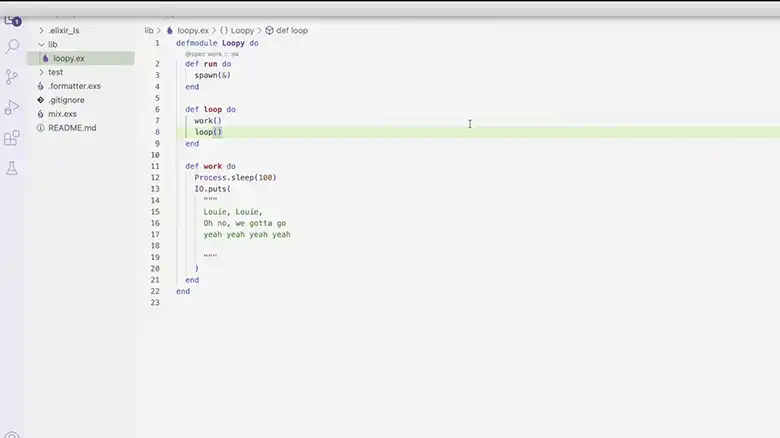Can I get Erlang OTP behaviors in C Nodes?
Erlang, known for its exceptional capabilities in building concurrent, fault-tolerant, and distributed systems, relies on the Erlang/OTP behaviors as a key element in its toolkit. These behaviors, such as gen_server, gen_fsm, and gen_event, provide powerful abstractions that simplify the development of robust, distributed applications. But what if you need to integrate non-Erlang components into your system, or you’re looking to boost performance by using C or C++ code?
This article explores the possibilities of using Erlang OTP behaviors in C Nodes and dives into the advantages, disadvantages, and common questions surrounding this integration.

What Are Erlang OTP Behaviors?
Before we get into the integration aspect, let’s briefly recap what Erlang OTP behaviors are and how they work.
Example: An Erlang Gen Server
Imagine a scenario where you’re building a chat application in Erlang, and you need to handle user sessions. The gen_server behavior is a perfect fit. Here’s an example of an Erlang gen_server:
-module(chat_server).
-behaviour(gen_server).
-export([init/1, handle_call/3, handle_cast/2, handle_info/2, terminate/2, code_change/3]).
In this Erlang module, we define the behavior, implement callback functions like init/1 and handle_call/3, and handle specific messages and states, making it a powerful tool for handling session data.
Can You Use Erlang OTP Behaviors in C Nodes?
Integrating Erlang OTP behaviors into C Nodes is a complex endeavor. C Nodes are used to interface Erlang with C or C++ code, often for performance or compatibility reasons. Let’s explore the possibilities:
Advantages of Using Erlang OTP Behaviors in C Nodes
Performance Gains: One of the primary reasons for integrating C code in Erlang is performance. C code can be significantly faster than pure Erlang, making it ideal for computationally intensive tasks. By using Erlang OTP behaviors in C, you can harness the power of C for specific tasks while maintaining the fault-tolerance and distribution features of Erlang.
Legacy Code Integration: Many organizations have legacy C or C++ codebases. Integrating Erlang OTP behaviors in C Nodes allows you to leverage these existing components and gradually transition to a more Erlang-centric architecture.
Access to C Libraries: C code provides direct access to a wide range of libraries and hardware resources, making it suitable for low-level tasks such as hardware control or low-level protocol handling.
Disadvantages of Using Erlang OTP Behaviors in C Nodes
Complexity: Adapting Erlang OTP behaviors to work in C Nodes is a non-trivial task. These behaviors are tightly integrated with the Erlang runtime and its message-passing model. Implementing equivalent behavior in C requires deep knowledge of both Erlang and C.
Interoperability Challenges: Managing the communication between Erlang and C components can be challenging. You need to understand and work with the Erlang distribution protocol and address issues related to message-passing and concurrency.
Loss of Erlang Features: Integrating C code can result in a loss of some Erlang features, such as hot code swapping and transparent distribution. This is because the C code is not inherently aware of Erlang’s runtime environment.
Examples: Implementing a Simplified gen_server in C
To illustrate the concept, here’s a simplified example of how you might implement a gen_server-like behavior in C:
#include <stdio.h>
#include <pthread.h>
// Define a structure to hold the state of your "gen_server"
typedef struct {
int value;
pthread_mutex_t mutex;
} GenServerState;In this code, we define a C struct to hold the state of our “gen_server,” which includes an integer value and a mutex for thread safety.
// Define functions to initialize and handle the "gen_server"
void gen_server_init(GenServerState *state) {
state->value = 0;
pthread_mutex_init(&state->mutex, NULL);
}
int gen_server_call(GenServerState *state, int request) {
int response;
pthread_mutex_lock(&state->mutex);
response = state->value + request;
state->value = response;
pthread_mutex_unlock(&state->mutex);
return response;
}Here, we implement gen_server_init to initialize the state and gen_server_call to handle requests, similar to how an Erlang gen_server would work.
// Main function for a "gen_server" process
void* gen_server_process(void *data) {
GenServerState *state = (GenServerState*)data;
// Simulate handling requests
while (1) {
// Simulate receiving a request
int request = 5;
int response = gen_server_call(state, request);
printf("Request: %d, Response: %d\n", request, response);
// Simulate a delay (processing time)
usleep(1000000); // Sleep for 1 second
}
}In the main function, we create a pthread for the “gen_server” process, simulate request handling, and delay to mimic processing time.
Can I use Erlang OTP behaviors in C Nodes without modifications?
No, you will need to reimplement Erlang OTP behaviors in C to achieve similar functionality. These behaviors are designed for the Erlang runtime and message-passing model.
What are some resources to learn more about C Nodes and Erlang integration?
You can explore the official Erlang documentation and community forums. Additionally, there are books and online courses dedicated to Erlang and its integration with other languages.
Are there any tools or libraries to facilitate Erlang-C integration?
Yes, tools like the erl_interface and NIFs (Native Implemented Functions) provide mechanisms for integrating C code with Erlang. They are commonly used for interlanguage communication.
What are the best practices for error handling in Erlang-C integration?
Error handling is crucial. Use mechanisms like monitoring and tracing to detect issues early and ensure proper handling of errors.
End Notes
Integrating Erlang OTP behaviors into C Nodes is a complex task, but it can provide significant advantages in terms of performance and legacy code integration. However, it comes with its share of challenges, primarily in terms of complexity and interoperability. When considering this integration, carefully evaluate the specific needs of your project and the trade-offs involved.
In summary, bridging the gap between Erlang OTP behaviors and C Nodes is a powerful way to leverage the strengths of both technologies. It’s a testament to the versatility of Erlang as a language that can seamlessly integrate with other technologies while maintaining its fundamental principles of concurrency and fault tolerance.